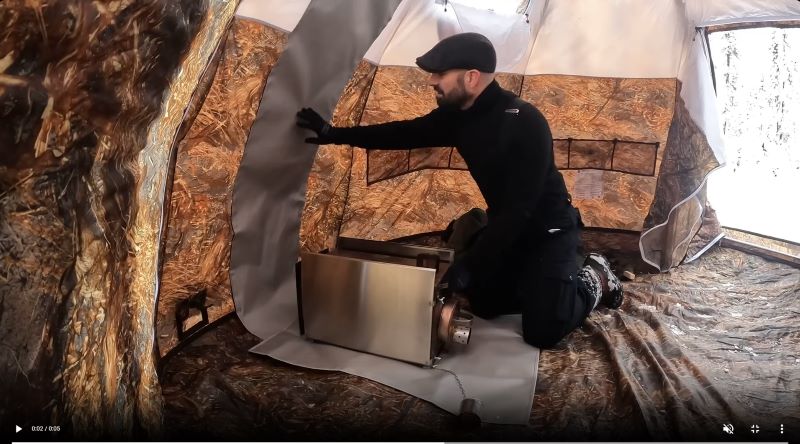Heat-resistant fabrics are essential for camping gear and accessories that need to withstand exposure to high temperatures, such as tents, fire-resistant tarps, cooking shelters, and protective coverings near stoves or campfires. Below are some commonly used heat-resistant fabrics in camping:
- Composition: Fiberglass base fabric coated with silicone for durability and heat resistance.
- Properties:
- Can withstand temperatures up to 500°C (932°F).
- Highly durable, waterproof, and resistant to UV rays.
- Flexible and easy to handle for various camping applications.
- Uses in Camping:
- Fireproof mats or ground barriers near campfires or stoves.
- Protective covers for cooking equipment.
2. Canvas (Treated with Fire-Resistant Coatings)
- Composition: A tightly woven natural fabric, usually made from cotton or a cotton-polyester blend, treated with fire-retardant chemicals.
- Properties:
- Heat-resistant and breathable, reducing the risk of heat build-up.
- Durable and weather-resistant when treated.
- Offers moderate protection against sparks and embers.
- Uses in Camping:
- Canvas tents for camping in areas with fire risks.
- Ground tarps or coverings near open flames.
3. Aramid Fibers (e.g., Kevlar or Nomex)
- Composition: Synthetic fibers known for their exceptional heat and flame resistance.
- Properties:
- Withstands high temperatures up to 400°C (752°F) without melting.
- Lightweight and highly durable.
- Resistant to wear and tear, offering excellent long-term performance.
- Uses in Camping:
- Fire-resistant clothing for campers in wildfire-prone areas.
- Protective gloves and barriers for handling hot camping gear.
4. High Silica Fabrics
- Composition: Made from silica fibers with high purity (up to 96% silica content).
- Properties:
- Can resist extreme temperatures up to 1,200°C (2,192°F).
- Non-combustible and resistant to thermal shock.
- Flexible and lightweight for easy handling.
- Uses in Camping:
- Liners or protective mats for woodstoves in winter tents.
- Heat shields for cooking setups.
5. Carbon Fiber Fabrics
- Composition: Woven from carbon fibers with exceptional thermal resistance.
- Properties:
- Can tolerate temperatures up to 3,000°C (5,432°F) in non-oxidizing environments.
- Lightweight and strong, with excellent durability.
- Resistant to chemical and environmental degradation.
- Uses in Camping:
- High-end heat shields or mats near high-temperature zones.
- Reinforced layers in specialized camping gear.
6. Wool (Treated or Untreated)
- Composition: Natural fiber derived from sheep, sometimes treated for additional fire resistance.
- Properties:
- Naturally flame-resistant due to its high ignition temperature (~570°C or 1,058°F).
- Excellent insulating properties, keeping heat out or retaining warmth.
- Non-melting and doesn’t produce toxic fumes when exposed to heat.
- Uses in Camping:
- Fire-resistant blankets for sitting around campfires.
- Liners or insulating layers in winter camping gear.
7. Polyimide Fabrics
- Composition: Made from polyimide polymers known for their thermal and chemical resistance.
- Properties:
- Can withstand temperatures up to 260°C (500°F) continuously, with short-term resistance to higher temperatures.
- Lightweight and flexible.
- Chemically resistant, making it ideal for outdoor use.
- Uses in Camping:
- Heat-resistant tarps or covers near stoves.
- Protective layers in tent designs for added fire safety.
- Composition: Fabric base (e.g., nylon or polyester) coated with heat-resistant polyurethane.
- Properties:
- Heat resistance varies by coating but generally withstands up to 200°C (392°F).
- Waterproof and lightweight, ideal for camping applications.
- Flexible and easy to fold for compact storage.
- Uses in Camping:
- Protective covers for gear near moderate heat sources.
- Tents or tarps with enhanced fire resistance.
- Composition: Heat-resistant base fabrics (e.g., fiberglass or aramid) with an aluminum coating.
- Properties:
- Reflects radiant heat, protecting against extreme temperatures.
- Withstands temperatures up to 600°C (1,112°F).
- Durable and resistant to environmental factors like moisture and UV exposure.
- Uses in Camping:
- Heat shields around campfires or stoves.
- Fireproof blankets or covers.
Choosing the Right Heat-Resistant Fabric for Camping
When selecting heat-resistant fabrics for camping, consider the following:
- Application: Determine whether you need protection for tents, cooking areas, or personal safety.
- Temperature Resistance: Match the fabric’s heat tolerance to the expected temperature conditions.
- Portability: Opt for lightweight and foldable options for easy transport.
- Durability: Ensure the fabric can withstand outdoor wear and tear.
Heat-resistant fabrics enhance safety and comfort during camping trips, making them a worthwhile investment for outdoor enthusiasts.
